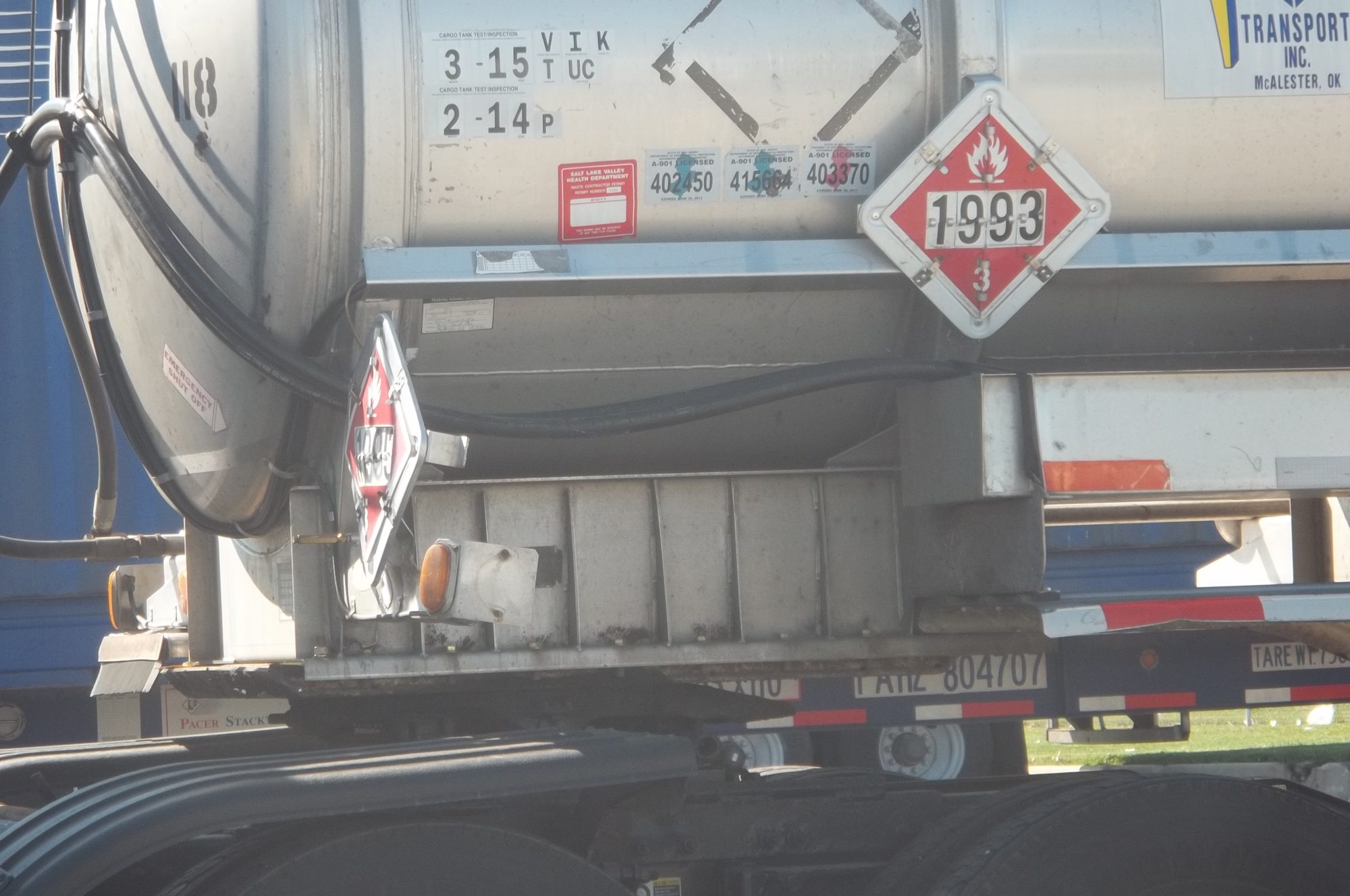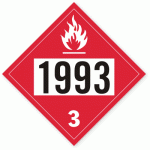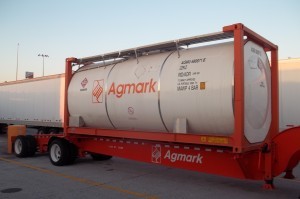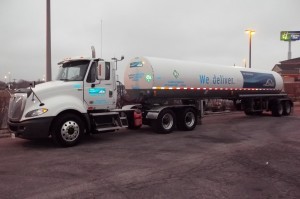From the contact form on my website on December 9, 2016:
We have a trailer with two Deck Engines w/ a 400 Gal. Diesel Tank that supply’s Fuel to both engines.
Question 1. Do we have to Placard the on all for sides of the tank.
2. Does the driver need a Haz-mat Endorsement. Thanks.
(the email included a picture of a flat bed trailer hauling the deck engine and two intermediate bulk containers of diesel fuel.)
Contact me with any questions you may have about the transportation of hazardous materials by air, highway, vessel, or rail International and Domestic Daniels Training Services, Inc. 815.821.1550 |
My reply December 11th:
Please see below:
- Diesel fuel is classified as a Class 3 Combustible Liquid.
- The diesel tanks on the trailer classify as a bulk packaging. The packaging is known as an IBC or Intermediate Bulk Container.
- A bulk packaging of a combustible liquid is not subject to the exception at 49 CFR 173.150(f).
- The requirements to use DOT specification packaging is not applicable to a bulk packaging of a Class 3 Combustible Liquid.
- The placarding requirements of 49 CFR 172, subpart F do apply to this HazMat.
- Per 49 CFR 172.514(c)(4) an IBC is required to display the applicable placards on two opposing sides. The 4-digit identification number must appear on or near the placard. Alternatively, the IBC may display HazMat labels and the proper shipping name and identification number on only one side. Read: HazMat Labels, Placards, and Marks on an IBC.
- Per 49 CFR 172.504(a) each transport vehicle required to display placards (as in this situation) must display them on all four sides of the vehicle.
- 49 CFR 172.516(a) requires the placards to be visible from the direction they face.
- The placards on the IBCs may suffice to replace the required placards on the side of the truck that the placarded IBCs face. In short, if placards are displayed on the IBCs so that they are visible from all four sides of the vehicle, you can meet both requirements with the same 4 placards. A more conservative approach is the display placards or HazMat labels on the IBCs as required and also display placards on all four sides of the vehicle.
I hope this helps.
Please don’t hesitate to contact me with any other questions.
I guess that did it because I didn’t hear back from him.
Please feel free to contact me if you have any questions about the transportation of a combustible liquid. See below for links to other articles for more information.




